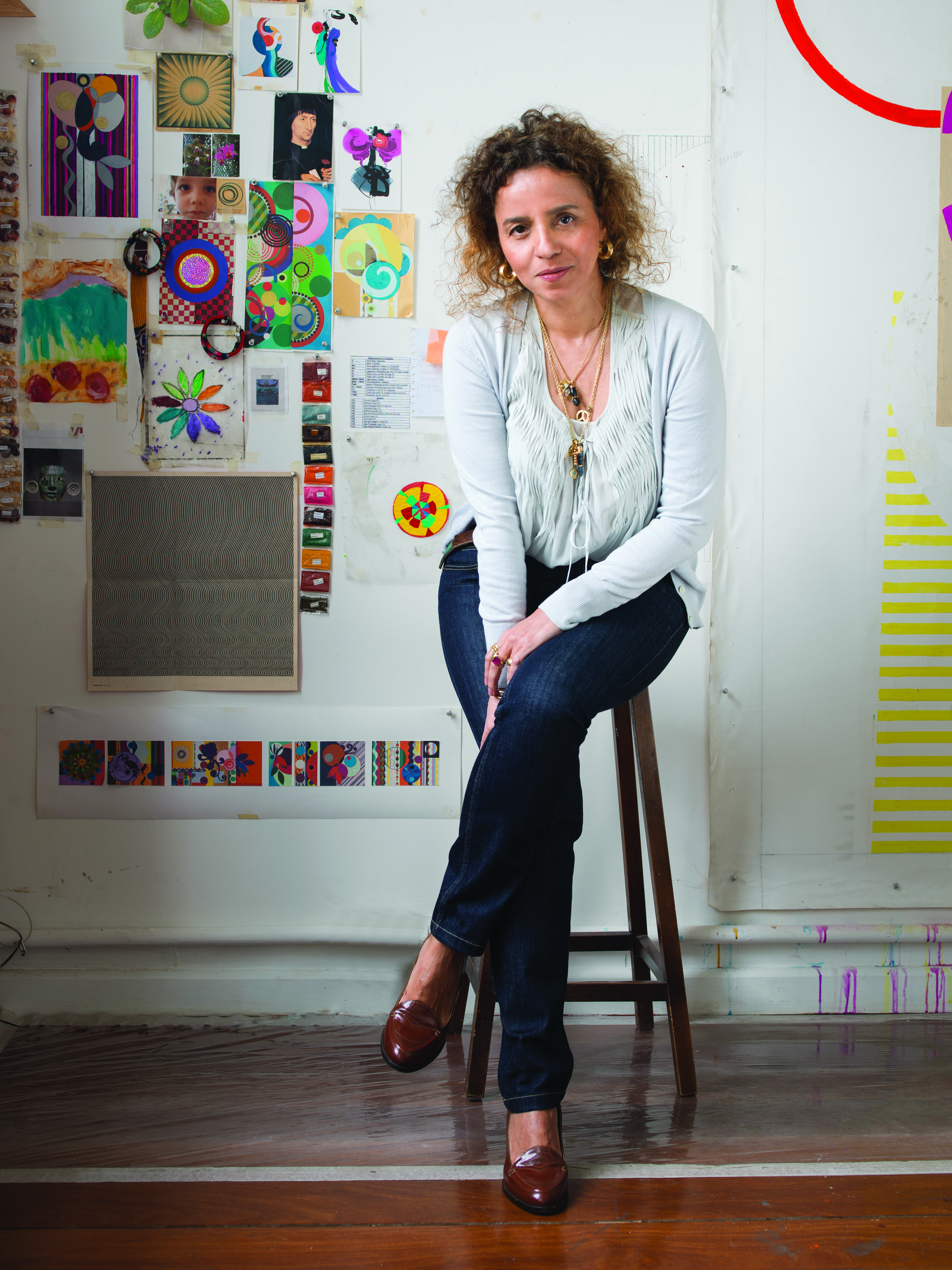
Rio de Janeiro-based artist Beatriz Milhazes is warm and talkative when you sit down with her. Chatting in a private office at James Cohan Gallery in New York, her American dealer, she bubbles over with ideas, observations and stories. Her paintings, prints and sculptures follow suit—Milhazes calls herself a “geometric artist,” and her works are vibrantly colored, bursting with bright orbs and other shapes that seem to go into motion before your eyes. When you see them at an art fair or in a museum, the compositions have an almost cinematic quality that draws you in.
Milhazes, 56, recently debuted her latest public piece at Grace Farms, in New Canaan, Connecticut, which was designed by the acclaimed Japanese architecture firm SANAA. Though she has done public works before, Moon Love Dreaming is only her second wall painting, and it will be on display indefinitely.
At 108 feet long, Moon Love Dreaming is filled with leaf, dot and floral shapes that become more and more abstract, and the title comes from Australian Aboriginal painting. Milhazes is in good company, too, since the other works on view at Grace Farms are by the likes of Teresita Fernández and Olafur Eliasson.
Like all really good abstractionists, she talks about “developing my own language,” since she generally doesn’t attempt to depict concrete things. The circle clearly has special meaning for her, and she explains, “I want your eyes to move, and of course, circles don’t have an end. I don’t want your eyes to stop anywhere.”

But she makes a good point about the distinctions we make when talking about art. “To be honest, all painters are abstract because you don’t work with any real things.” Brazilians are good at casually explaining such high concepts and making them sound like no big deal.
Milhazes is, in her words, “an international artist,” meaning that she has dealers in the U.S., Brazil and Europe, and flies around the world making works and being part of the increasingly global art world. But she is clear about how powerful her Brazilian roots and her context in Rio are to her.
Her studio is by a botanical garden, “so all these tropical things” matter to her greatly, she says. Certainly the ripe colors in her work demonstrate this. “I want to use my surroundings. I don’t want to forget them. Even if I wanted to, I couldn’t.” She actually has two studios on the same street: one for painting, the other for collage, planning, study and the other demands of being an artist. (She lives elsewhere, in the chic Leblon neighborhood.)

Milhazes studied journalism for a time, even though she says, “I always wanted to be a painter.” When a documentary crew came to profile her and rifle through childhood drawings, it became clear to her that “other kids had even more beautiful pictures than mine when I was a child,” she says, laughing. As it happens, her mother is the one who nudged her toward being serious about the craft. “She wanted me to be an artist. Art was the great thing,” she says.
Based on her work, Wassily Kandinsky might seem to be an influence, but it turns out that Milhazes has her eyes on other inspirations. “It was more Matisse and Mondrian because of the structures,” she says, referring to the way the two artists construct their picture planes with color.
She now toggles among media, carefully and thoughtfully spending a long period on painting and then on collage. “They start exchanging language between them,” she says. Milhazes began doing set design for her sister’s dance company, which put more wheels in motion. “The sets opened up another door for what became a kind of sculpture,” she explains.
Grace Farms is one of many projects and shows that Milhazes has on view or in progress, and as she heads off to her next appointment in New York, she has that slightly-weary-but-enthused sound that creative people have when they’re in the zone. As she puts it, “My work is my life, you know?”




